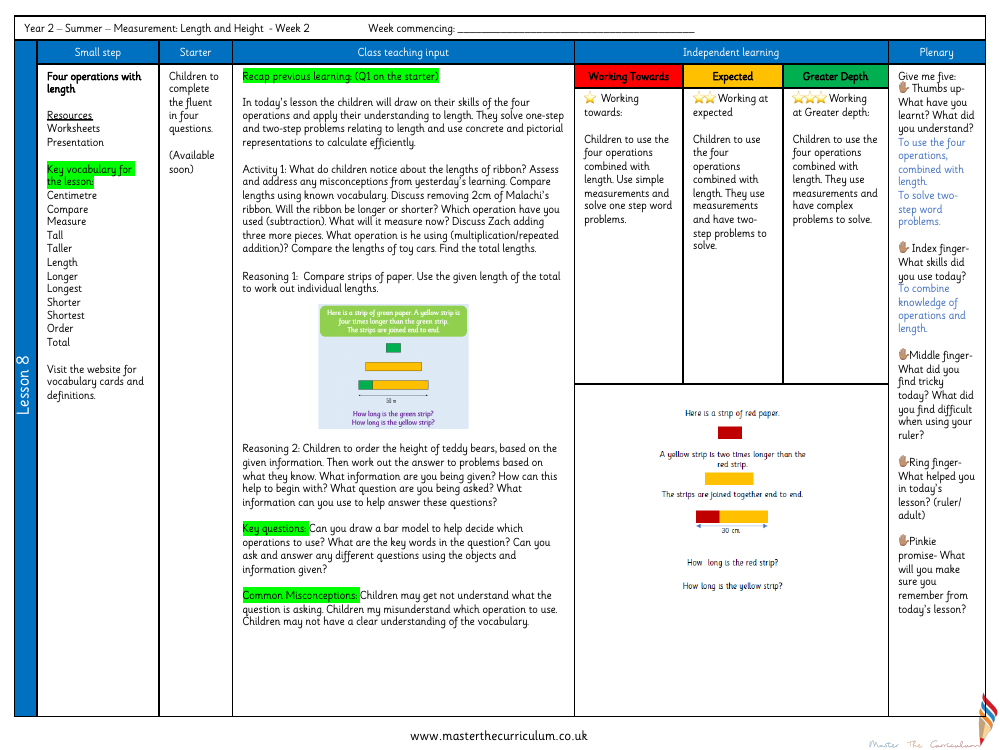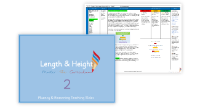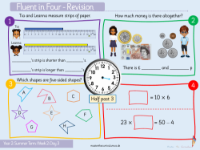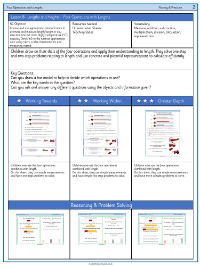Length and height - Four operations with length - Planning

Maths Resource Description
In a Year 2 mathematics lesson focused on measurement, specifically length and height, students are encouraged to apply the four basic operations—addition, subtraction, multiplication, and division—to real-world scenarios involving measurement. The lesson aims to enhance their problem-solving skills by having them solve one-step and two-step problems that require an understanding of length. Using a variety of resources including worksheets and a presentation, children are introduced to key vocabulary such as 'centimetre', 'compare', 'measure', and terms related to comparative lengths like 'taller', 'longer', and 'shortest'. The lesson begins with a recap of previous learning and moves on to activities where students compare lengths of ribbons and toy cars, and calculate changes in length through practical examples.
During the lesson, the children engage in reasoning tasks that challenge them to use given total lengths to determine individual lengths and to order the height of teddy bears based on provided information. They are encouraged to use bar models to help understand which operations to apply and to identify key words in questions that guide their problem-solving process. To ensure comprehension, the lesson addresses common misconceptions such as misunderstanding the questions or operations required. The lesson concludes with a reflection session where students are asked to consider what they've learned about combining operations with length measurements and to identify any areas they found challenging. Differentiated outcomes are provided for varying levels of understanding, from working towards the expected level to achieving greater depth in solving complex problems involving length and height.



